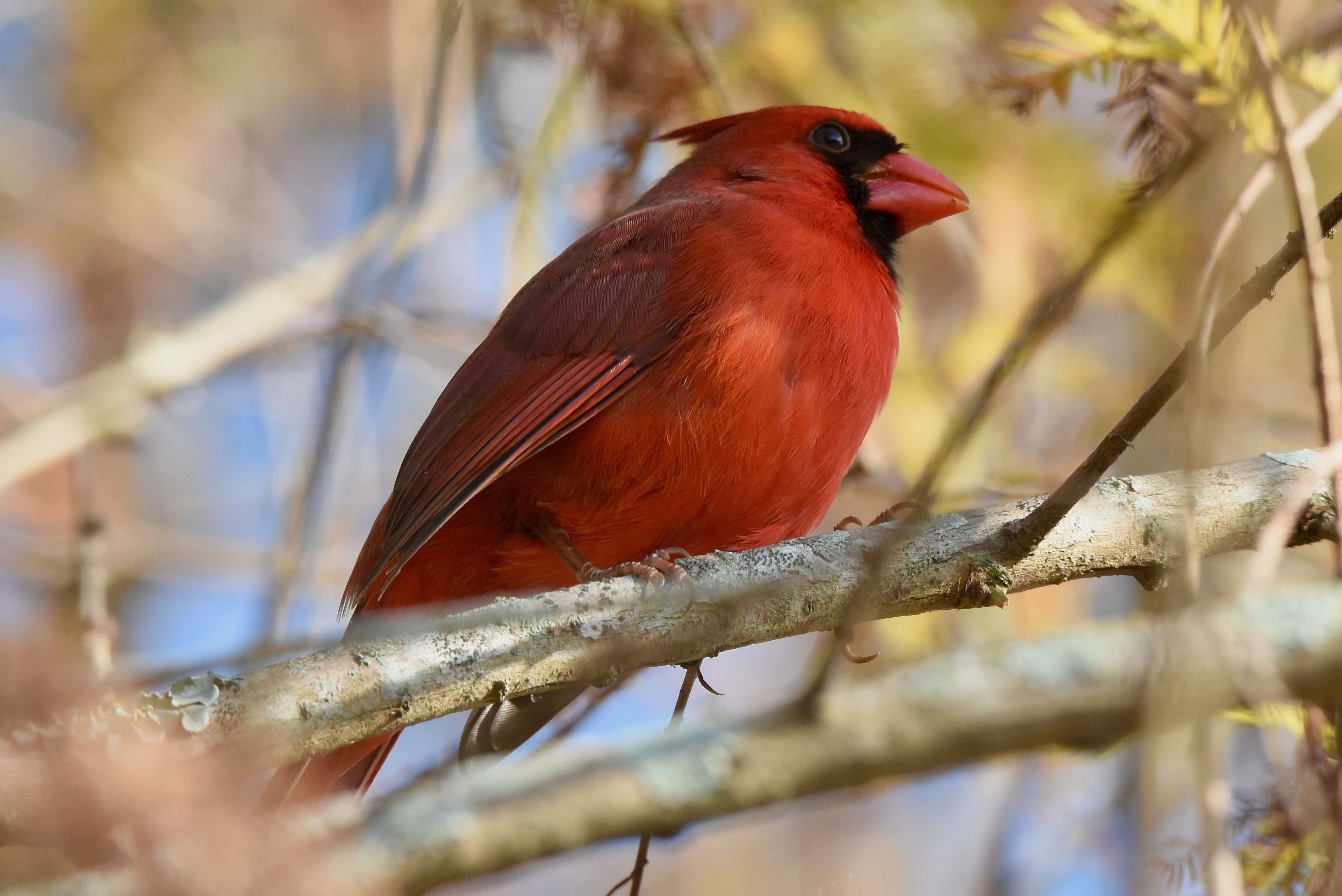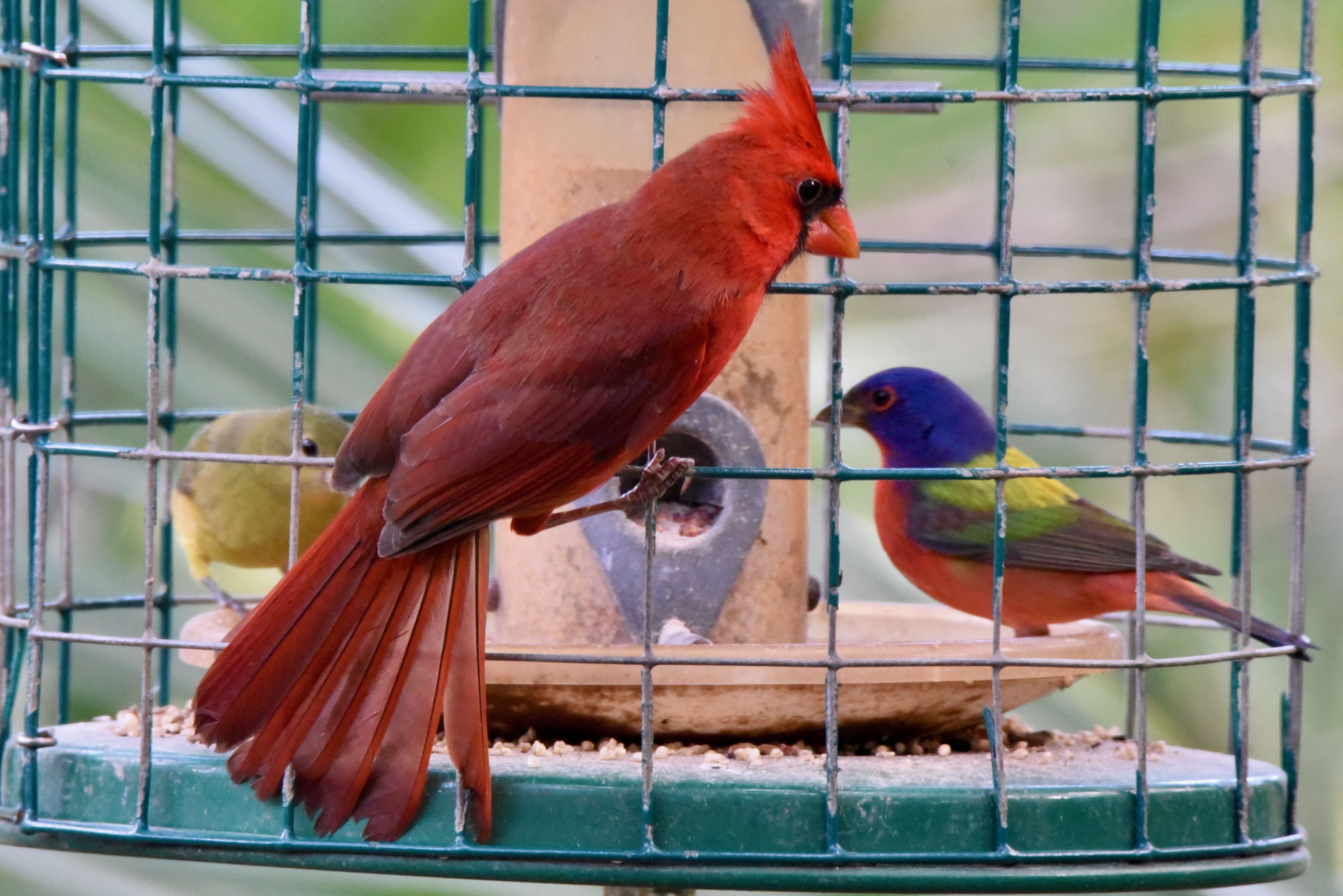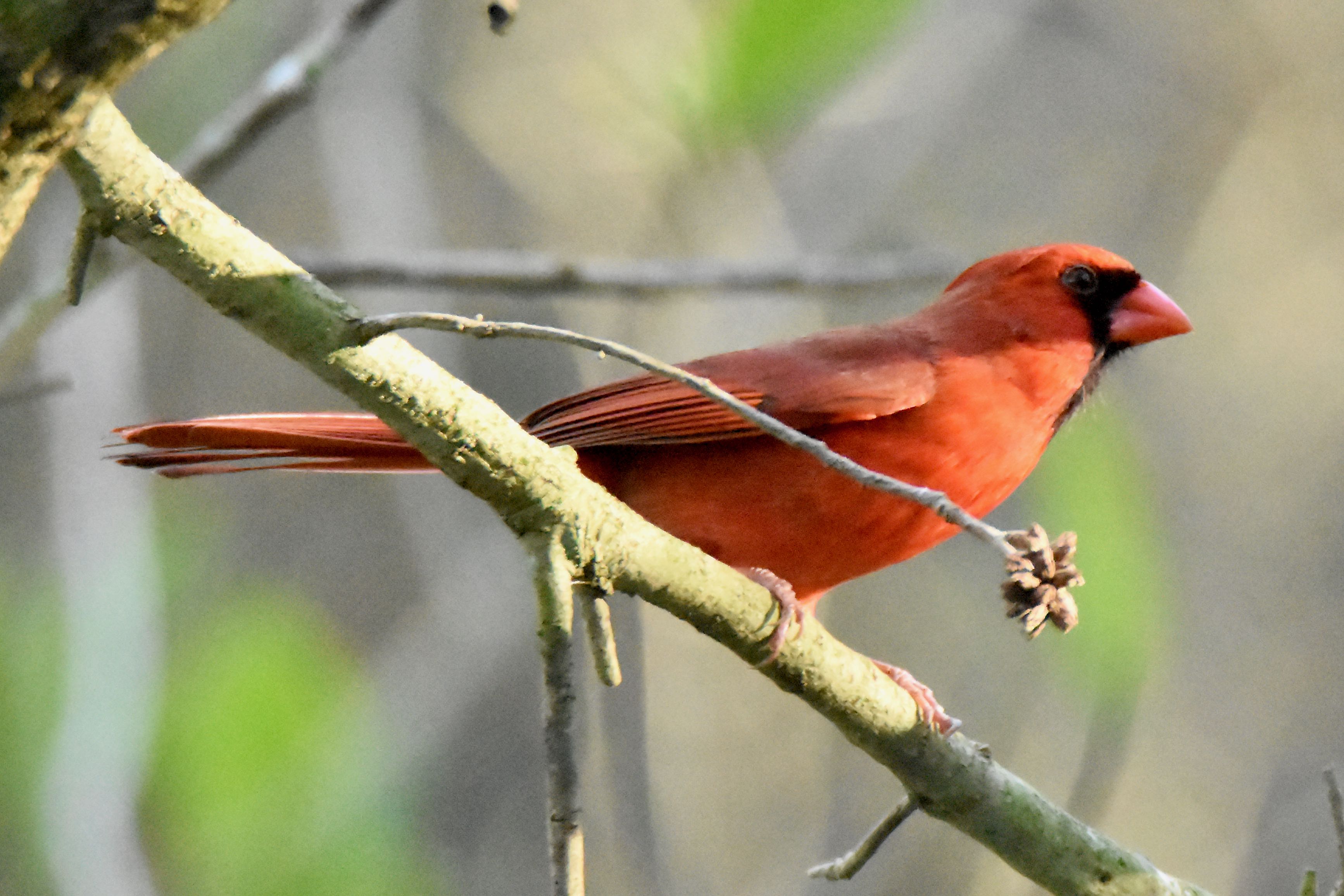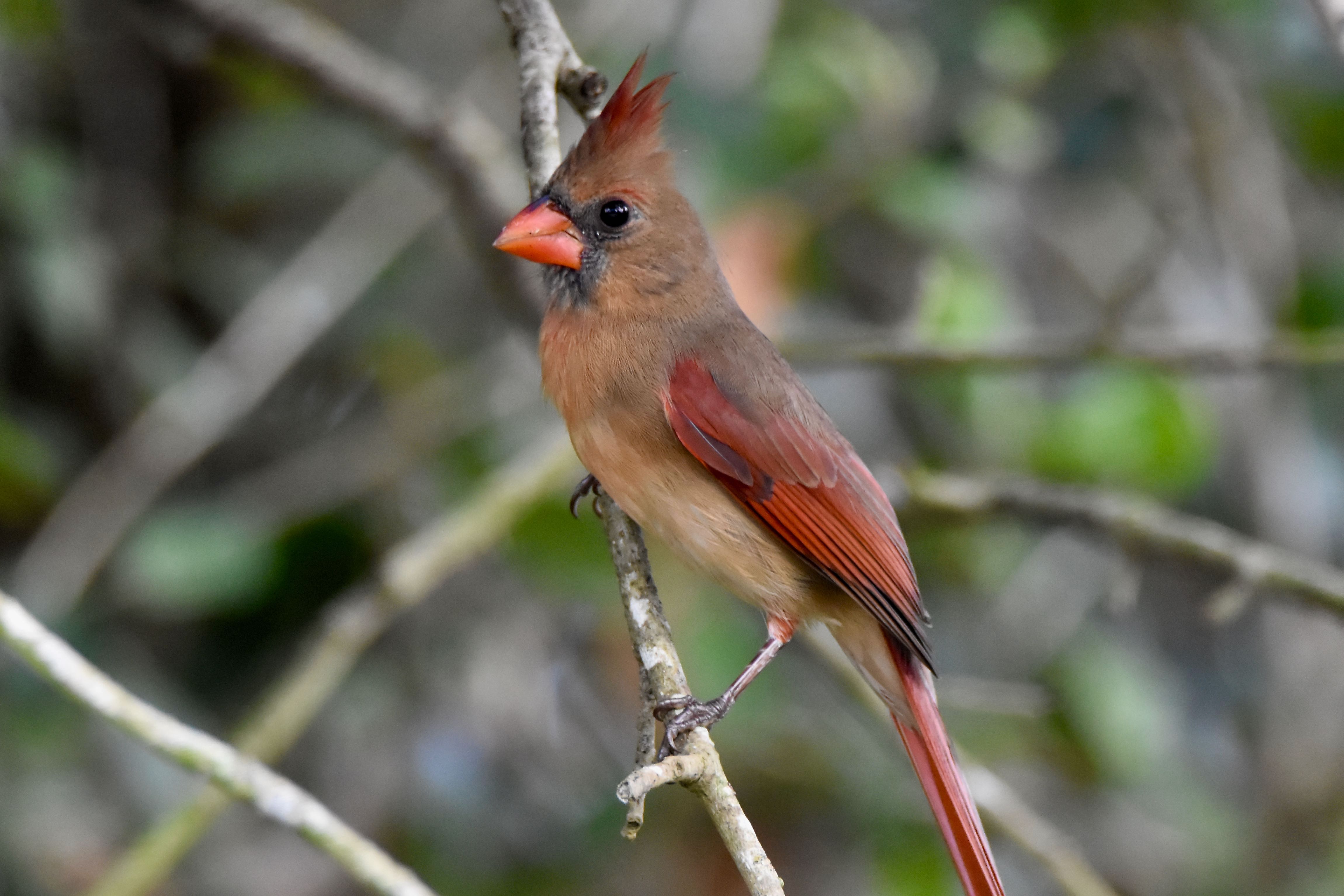
Northern cardinal, photographed at Green Cay Nature Center in Boynton Beach, Palm Beach County.
Northern cardinals, Cardinalis cardinalis, arguably are the most prominent of South Florida's songbirds. While the northern mockingbird certainly rivals them in voice, they're no match for the male cardinal's bright red plummage.
They're common anywhere you might care to go, deep into the woods, around town and all points in between as long as there are bushes or thickets to provide cover. Florida even has its own subspecies, C. cardinalis ssp. floridanus, found throughout most of the state. A second subspecies, C. cardinalis ssp. cardinalis, is found west of the Apalachicola River.
Both sexes are the same size, with a body length of about 9 inches and a wingspan of a foot. Males are brilliant red, with a black face mask. Females are more of a dull brown and have a less prominent mask. Both sexes share the tell-tale crest. Cardinals are one one of the few species of songbirds where the female is as vocal as the male, if not more so. Females will sing from the nest, and it's believed she's signaling the male on what kind of food to bring back with him. Cardinals often are heard before seen, but scan in the direction of the sound and you're likely to spot the source. Their songs are fairly distinctive, one of the easier birds to learn.
Cardinals are year-round residents of Florida; in fact cardinals are not considered migratory at all even in the northernmost limits of their range. But the Florida Fish and Wildlife Conservation Commission notes that cardinal population in parts of the state, particularly the northwest, does seem to increase during winter. Northern cardinals are found throughout the eastern half of the U.S. into Canada. They're also found in Mexico and into Arizona.
The stout bill is a pretty good indicator of the kind of food cardinals eat — mostly nuts, seeds and fruit. They'll mix in the occasional bug during breeding season. Cardinals are territorial; males relentlessly patrols to keep intruders out. For a period in spring, they become extremely aggressive, so much so that they will attack their own reflections in a window or mirror and continue the fight for hours.
Both mates scout for a suitable site for nesting in brush, trees or tangled vines three to 12 feet off the ground. Females build a cup-like nest in the fork of small branches, hidden by dense foliage. Clutches can be as large as five eggs, typically three, and take as long as two weeks to hatch. The young fledge in less than two more weeks. Females do almost all of the sitting, but both parents feed their offspring. A pair will have one or two broods a year; in Florida, a third brood is possible, according to the FWC. Mom might leave early to begin the next brood while dad finishes rearing the extant brood.
There are actually 19 recognized subspecies of cardinal; in 2014 one scientist actually proposed dividing cardinals into six separate species based on DNA evidence. But the American Ornithologist's Union so far has rejected the idea because other factors, such as song patterns, weren't studied enough. More research is being done that could change that.
Northern cardinals are members of Cardinalidae, a family that also includes tanagers, grosbeaks and buntings.
Click on photo for larger image
Links for Northern Cardinal



